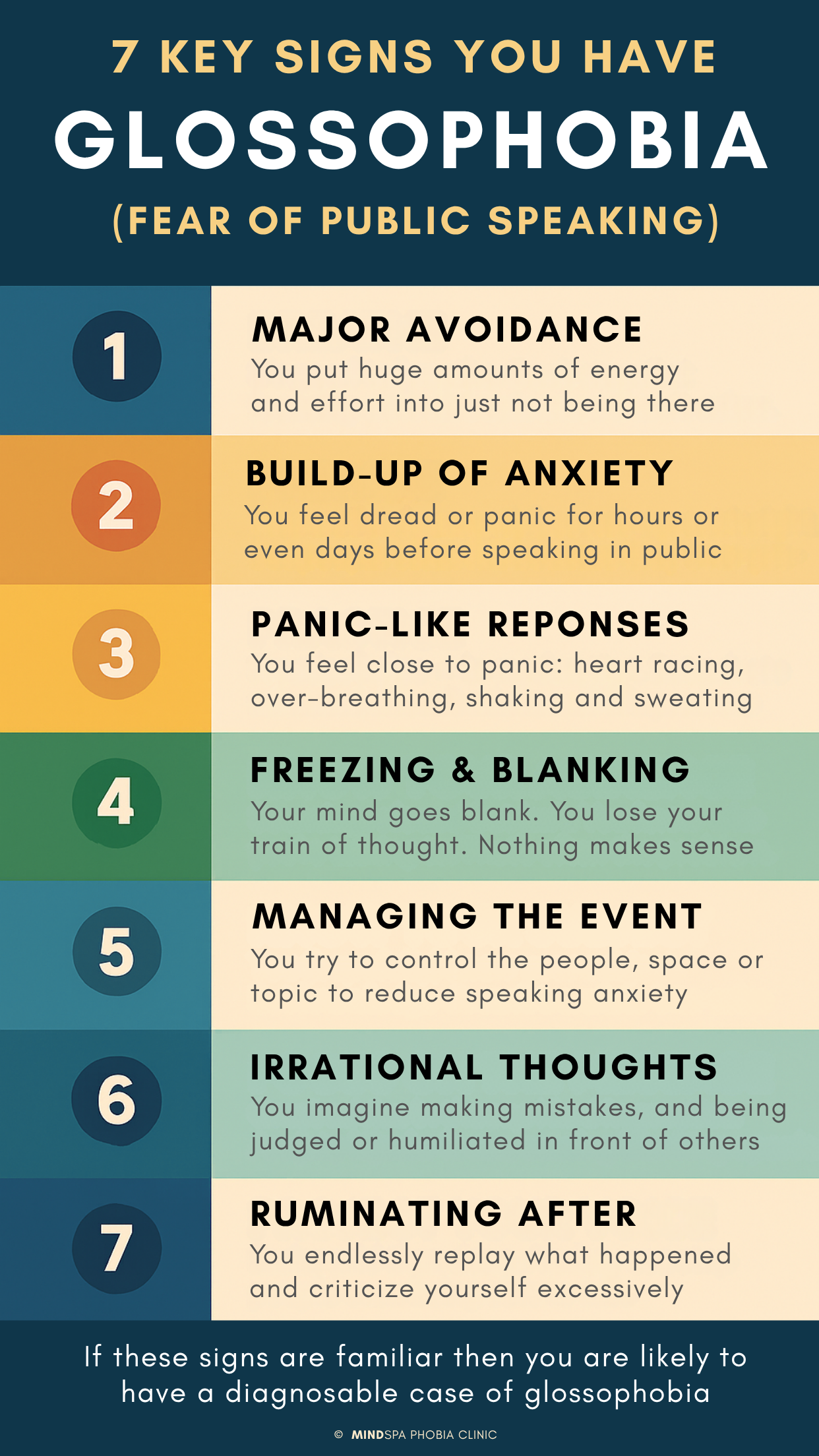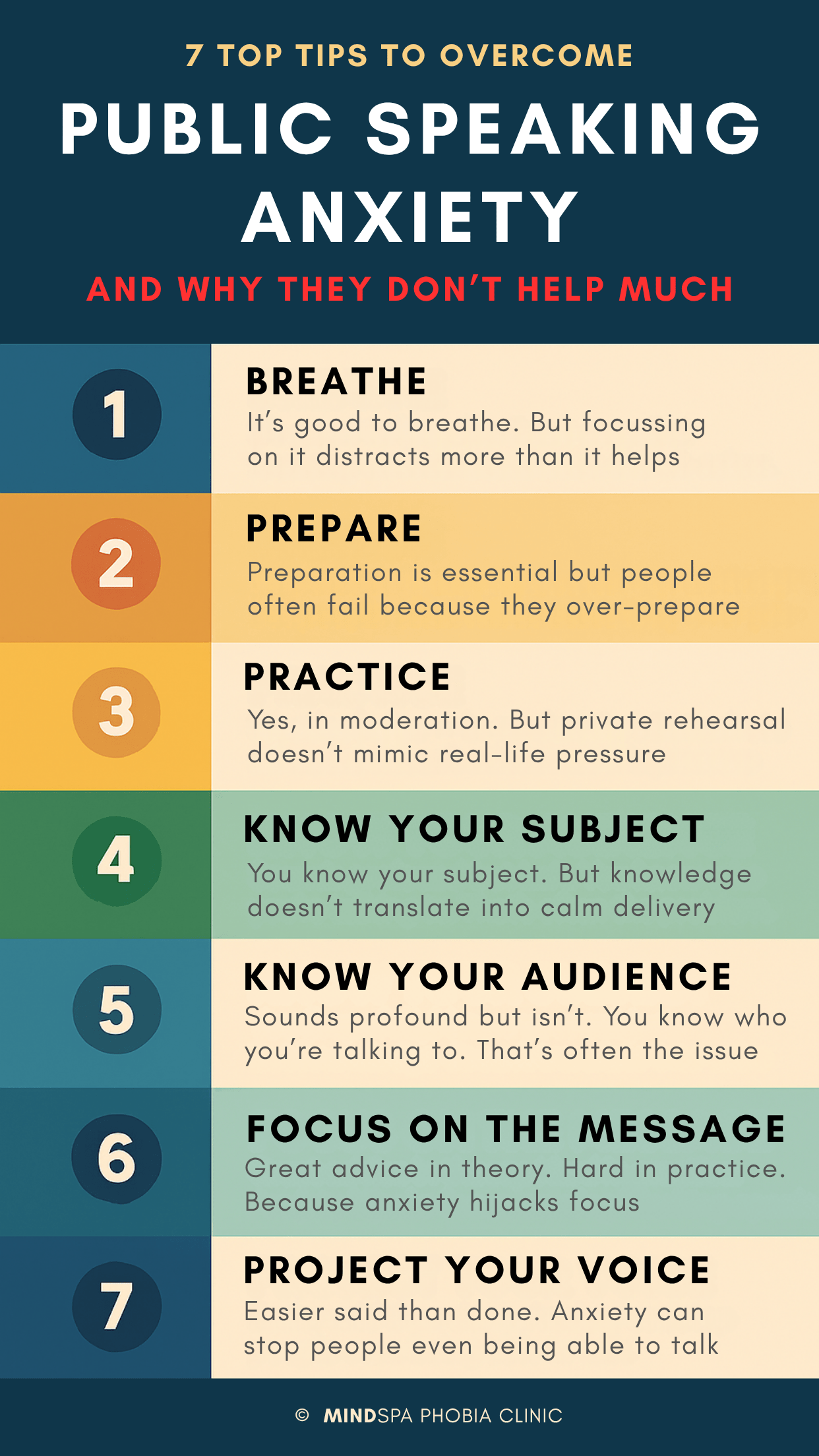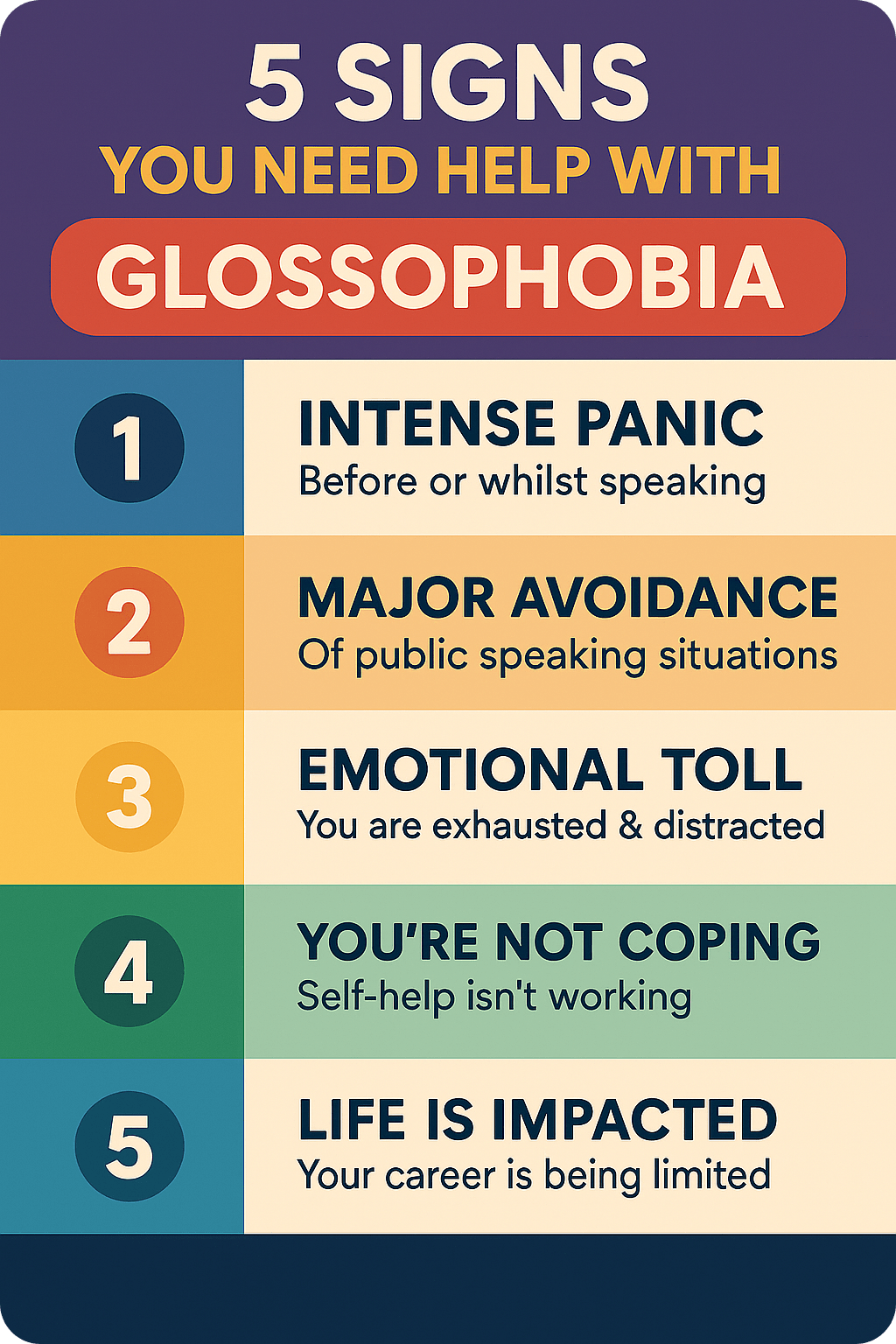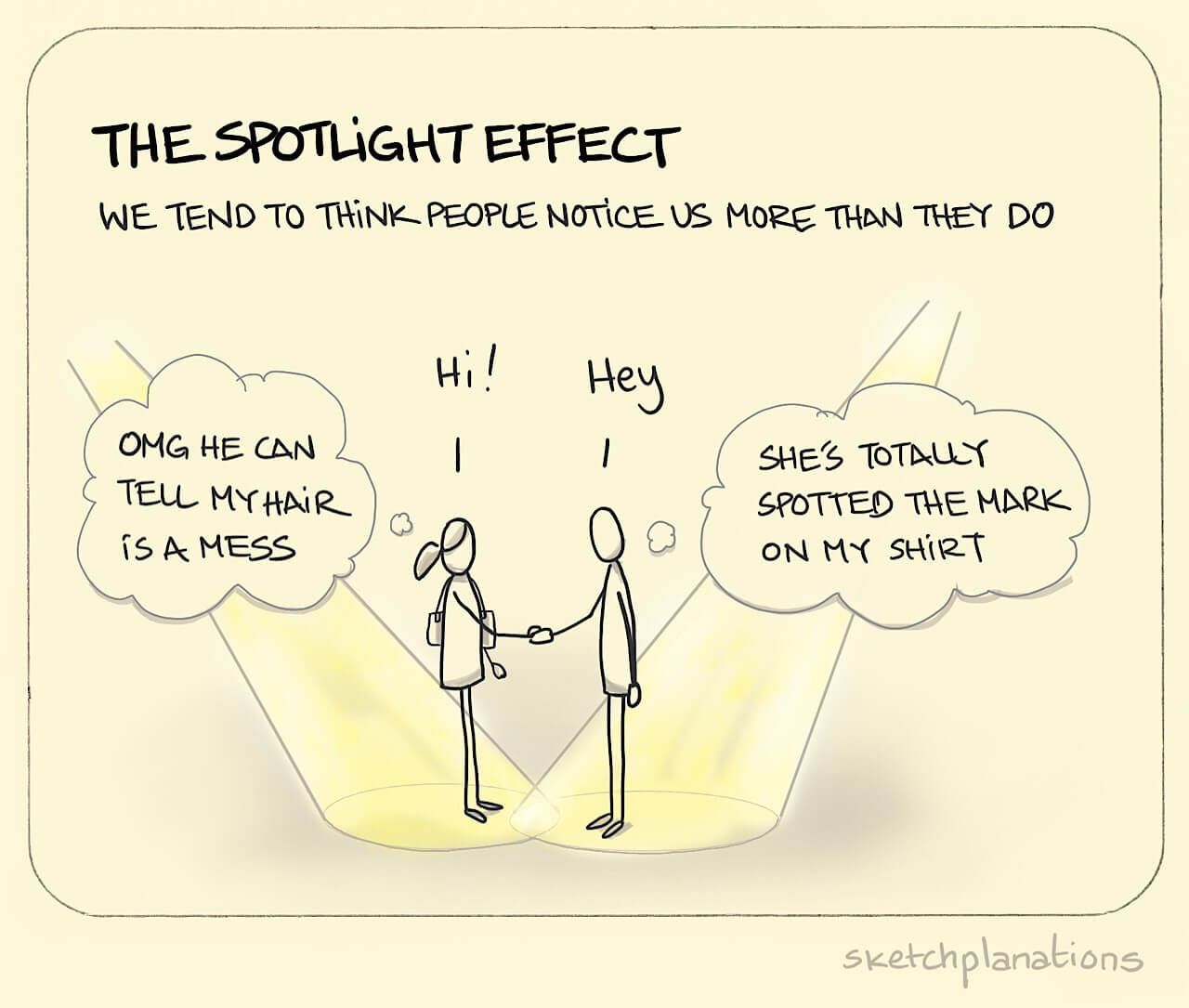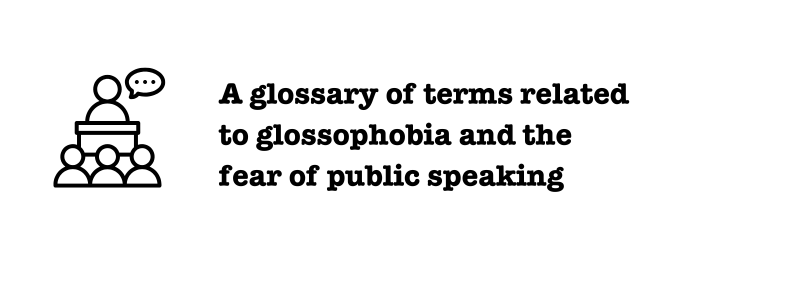Overcoming Glossophobia: The Fast Phobia Cure v Exposure Therapy
How Traditional CBT Exposure Therapy Falls Short and why The NLP Fast Phobia Cure Provides a Breakthrough

Glossophobia, more commonly known as the fear of public speaking, is one of the most widespread phobias in the world. Millions of people experience overwhelming public speaking anxiety and stage fright that can limit their personal growth and hold them back in their careers. While Cognitive Behavioural Therapy (CBT) and its well-known technique of exposure therapy have long been the standard approach, these methods have important limitations. This is why many people are turning toward innovative approaches such as Neuro-Linguistic Programming (NLP) and, in particular, the NLP Fast Phobia Cure, to find lasting relief from public speaking fear.
The Limitations of CBT and Traditional Exposure Therapy
CBT relies heavily on conscious reasoning and works by identifying distorted thoughts (“If I speak, everyone will laugh at me”) and gradually testing them through behavioural experiments in what is called exposure therapy. But because phobias are driven by the irrational unconscious mind, this approach is fundamentally limited because the sufferer already knows that their responses don’t make sense – that giving a presentation, for example, is not dangerous – so that’s not a great insight.
Exposure therapy involves gradually confronting the feared situation—such as speaking in front of an audience—until the anxiety decreases through repeated practice. Typically this will involve speaking to smaller groups and then to bigger gatherings. This approach can be effective for certain phobias, but its application in glossophobia often comes with challenges.
1. Slow and Time-Intensive Process
Progress with exposure therapy can take weeks or even months. Many people struggling with public speaking anxiety want faster results, especially when a presentation or speech is looming.
2. Not Practical
Most people don’t have too much choice when and where they can speak, particularly in a work setting. So progressing up a “ladder of fear” (the CBT term for the step-by-step hierarchy of feared situations) from smaller to larger groups, for example, is practically impossible to arrange. And the risk of panicking again in a real-world situation - in a meeting or delivering a wedding speech - can feel too risky to even try.
3. Reinforcing the Fear
Exposure therapy requires clients to consistently face situations that trigger intense fear. But because CBT does little to change the underlying fear response before people are asked to put themselves in the feared situation, they just feel frightened again. This can exacerbate the anxiety and reinforce their fear responses.
4. High Dropout Rates
For people with severe public speaking anxiety, the exposure process can feel overwhelming, leading many to abandon treatment before seeing results.
5. Limited Emotional Rewiring
Exposure therapy can desensitize a person to fear triggers, but it doesn’t always address the deeper emotional patterns that fuel glossophobia. This means that even after practice, feelings of dread or panic can resurface under stress.
The Fast Phobia Cure: A Different Approach
The Fast Phobia Cure (sometimes referred to as the Rewind Technique) is probably the most reliable and effective tool in psychotherapy today. It has been called shockingly effective by some therapists.
Unlike traditional CBT methods, the Fast Phobia Cure doesn’t require the client to rationalise their fear but instead targets the way fear is coded in the brain. It works on reprogramming how the mind processes past traumatic or anxiety-inducing memories related to public speaking. By changing the way these memories are stored and recalled, the technique can quickly eliminate the emotional intensity that triggers the dread and fear.
1. Rapid Results
Clients report dramatic reductions in public speaking anxiety after just one or two sessions. This makes it ideal for people who need urgent help for upcoming presentations or social speeches.
2. Non-Traumatic Process
Unlike exposure therapy, clients do not need to repeatedly face their fear head-on. Instead, the process involves guided visualization techniques that are comfortable and safe.
3. Deep Emotional Reset
The NLP Fast Phobia Cure doesn’t just manage symptoms; it restructures the way fear is encoded in the brain, removing the negative emotional charge that creates and maintains glossophobia.
4. Improved Confidence and Freedom
Once the emotional link between speaking in public and fear is dissolved, individuals often experience not only relief from stage fright – allowing them to move forward in their careers and socially - but also newfound confidence in other areas of life.
Choosing the Right Path to Overcome Glossophobia
For those suffering from severe public speaking anxiety, traditional exposure therapy can feel like an uphill battle. While it may help some people gradually become more comfortable, its limitations often prevent lasting or rapid change. In contrast, the Fast Phobia Cure offers a powerful alternative that goes beyond coping strategies and provides a deeper emotional transformation.
If public speaking anxiety has been holding you back, exploring modern techniques like NLP is the key to breaking free from glossophobia and stepping confidently into the spotlight.
At the Mindspa Phobia Clinic we use a unique and powerful adaptation of the Fast Phobia Cure to help people overcome their fear of public speaking.
Frequently Asked Questions About Glossophobia and the Fast Phobia Cure
Why doesn’t exposure therapy always work for public speaking anxiety?
Exposure therapy often requires repeated and stressful practice in front of real or simulated audiences. While this may reduce anxiety over time, it often fails to address the deeper emotional memories at the root of glossophobia, meaning the fear often returns.
What is the Fast Phobia Cure?
The Fast Phobia Cure is a technique from Neuro-Linguistic Programming that reprograms how the brain processes fearful memories. Instead of repeatedly confronting fear, it uses guided visualization to “rewire” the emotional response, decondition the patterns that drive the fear, and quickly eliminate public speaking anxiety.
Mindspa Phobia Clinic: The Fast Phobia Cure
How long does the Fast Phobia Cure take to work?
Many people notice significant improvements after just one or two sessions. Compared to traditional exposure therapy, which can take months, the NLP approach is much faster.
Mindspa Phobia Clinic: The Fast Phobia Cure
Is the Fast Phobia Cure safe?
Yes. The process is non-invasive and does not require reliving traumatic experiences directly. Instead, it works gently through mental imagery and reframing techniques.
Mindspa Phobia Clinic: The Fast Phobia Cure
Is the Rewind Technique the same as the Fast Phobia Cure?
The Rewind Technique and the Fast Phobia Cure are not exactly the same, although they are closely related. Both approaches come from the field of neuro-linguistic programming (NLP) and use imagery to dramatically reduce the emotional intensity of traumatic or phobic memories. The NLP Fast Phobia Cure is a quicker more straightforward process, while the Rewind Technique is longer and used for a wider range of issues beyond phobias, including PTSD and anxiety.

